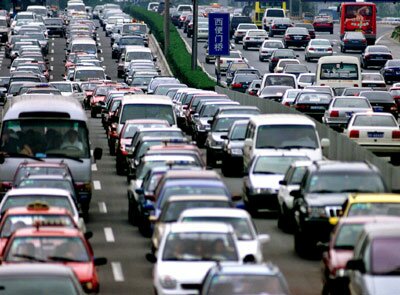 While some say that the public took mass transportation because of
traffic, it was not a serious force behind the mass transit jump because
policies like congestion pricing were not passed. While a study done in 2005 by
the Texas Transportation Institute said that traffic caused “drivers 4.2
billion lost hours and 2.9 billion gallons of wasted fuel,” traffic has always
been an issue since the rise of cars (Bellitteri, 51). The realization of lost
fuel due to traffic along with 2008’s
pricey gasoline may have pushed some commuters to mass transit, but traffic
alone was not a serious causation of the spike in ridership.
While some say that the public took mass transportation because of
traffic, it was not a serious force behind the mass transit jump because
policies like congestion pricing were not passed. While a study done in 2005 by
the Texas Transportation Institute said that traffic caused “drivers 4.2
billion lost hours and 2.9 billion gallons of wasted fuel,” traffic has always
been an issue since the rise of cars (Bellitteri, 51). The realization of lost
fuel due to traffic along with 2008’s
pricey gasoline may have pushed some commuters to mass transit, but traffic
alone was not a serious causation of the spike in ridership. If traffic were a pressing issue, then policies like congestion pricing would have been passed to solve the traffic. Congestion pricing is the idea that people can be tolled more while driving on major highways during the busiest times of the day. Though some policy makers have pushed to have congestion pricing passed, it has more often failed than succeeded, which shows that traffic was not incredibly important to the people or more of the public would have pushed to have it implemented.

Mayor Michael Bloomberg of New York City pushed to have congestion pricing. New York City, being the largest metropolis in the United States, has a lot of traffic. Bloomberg’s plan for congestion pricing failed, however (Neuman). If a policy such as congestion pricing fails in the largest city in America, traffic congestion must not be a pressing issue and thus not a large force behind the rise in public transit.
Has traffic pushed you to ride mass transit?
No comments:
Post a Comment